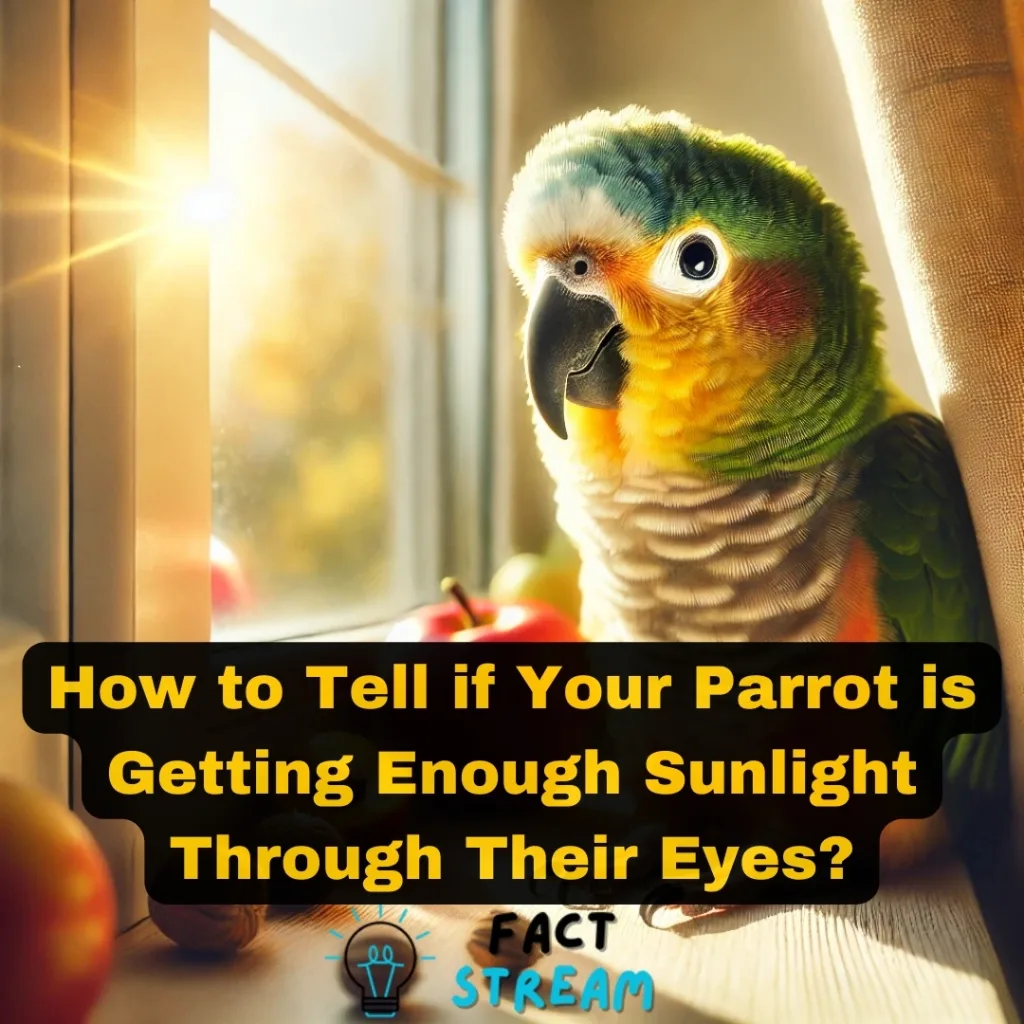How to Tell if Your Parrot is Getting Enough Sunlight Through Their Eyes?
Parrots, with their vibrant plumage and captivating personalities, bring joy to our lives. As responsible bird owners, ensuring their well-being is paramount. Just like humans, parrots require sunlight to thrive. But did you know that you can tell if your parrot is getting enough sunlight simply by looking at their eyes?
The Science Behind Avian Vision and Sunlight
Birds, especially parrots, possess incredible visual capabilities that far exceed our own. Their eyes, proportionally the largest in the animal kingdom, are specially designed to process light and color in ways we can only imagine. This remarkable vision plays a crucial role in their behavior, health, and overall happiness.
Sunlight, in particular, is vital for parrots as it provides essential ultraviolet (UV) radiation. While humans primarily perceive three primary colors (red, green, and blue), parrots have a fourth color receptor that allows them to see ultraviolet light. This means they can see a spectrum of colors we can’t even fathom, with estimates suggesting they perceive billions of colors compared to our measly seven million!
The Role of UV Light in Parrot Health
UV light is not just about color perception; it plays a critical role in a parrot’s overall health. Here’s why:
- Vitamin D3 Synthesis: UV light is crucial for the production of vitamin D3, which is essential for calcium absorption. Without enough vitamin D3, parrots can develop calcium deficiencies, leading to a host of health problems.
- Hormonal Regulation: The Harderian gland, located around a bird’s eye, measures the duration of light exposure (photoperiod) and transmits this information to the pineal gland. This process helps regulate the endocrine system, which controls hormone production and overall metabolism.
How to Tell If Your Parrot Is Getting Enough Sunlight Through Their Eyes
Now, let’s get to the heart of the matter: how can you tell if your parrot is getting enough sunlight through their eyes?
Unfortunately, there’s no foolproof way to determine a parrot’s sunlight sufficiency simply by looking at their eyes. While sunlight and UV light are essential for their health and well-being, there are no visible signs in their eyes that directly indicate adequate exposure.
The Importance of Sunlight and UV Supplements
However, inadequate sunlight can manifest in other ways. If a parrot isn’t receiving enough sunlight, you might observe:
- Increased aggression and biting
- Feather plucking, barbering, and other destructive feather habits
- Poor feather quality
- Reduced vision
Providing Adequate Sunlight and UV Supplementation
Since it’s impossible to tell if your parrot is getting enough sunlight solely through their eyes, it’s essential to ensure they have access to both natural sunlight and supplemental UV lighting.
- Natural Sunlight: Provide your parrot with safe access to direct, unfiltered sunlight whenever possible. Remember that screens and glass filter out most UV rays, so outdoor time is crucial. Even on cloudy days, UV light can penetrate the clouds, making outdoor time beneficial.
- UV-A Spectrum Lamps: Supplement natural sunlight with a high-quality UV-A spectrum lamp, especially during winter months or when outdoor access is limited. Ensure the lamp is specifically designed for birds and provides the appropriate UV-A levels without excessive UV-B.
The Benefits of Sunlight and UV Supplementation
Providing your parrot with adequate sunlight and UV supplementation can lead to a happier, healthier bird. You might notice:
- Improved appetite and willingness to try new foods
- Better sleep patterns
- Reduced biting and aggression
- Brighter, more iridescent feathers
- Less hormonal behavior
- A happier, more active demeanor
By prioritizing your parrot’s access to sunlight and UV lighting, you can contribute significantly to their overall health and well-being. While you might not be able to tell if they’re getting enough sunlight just by looking at their eyes, the positive changes in their behavior and appearance will speak volumes.


